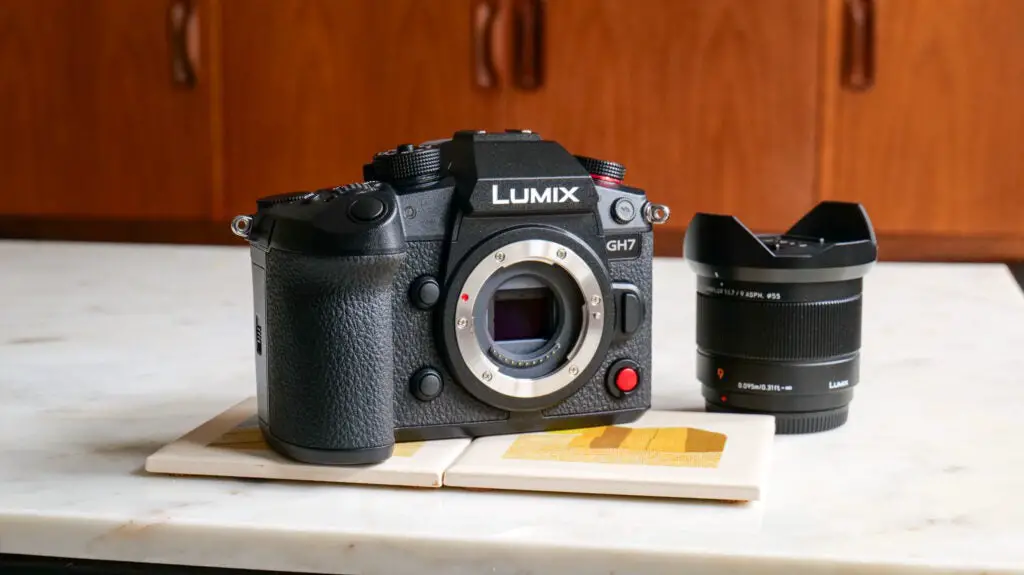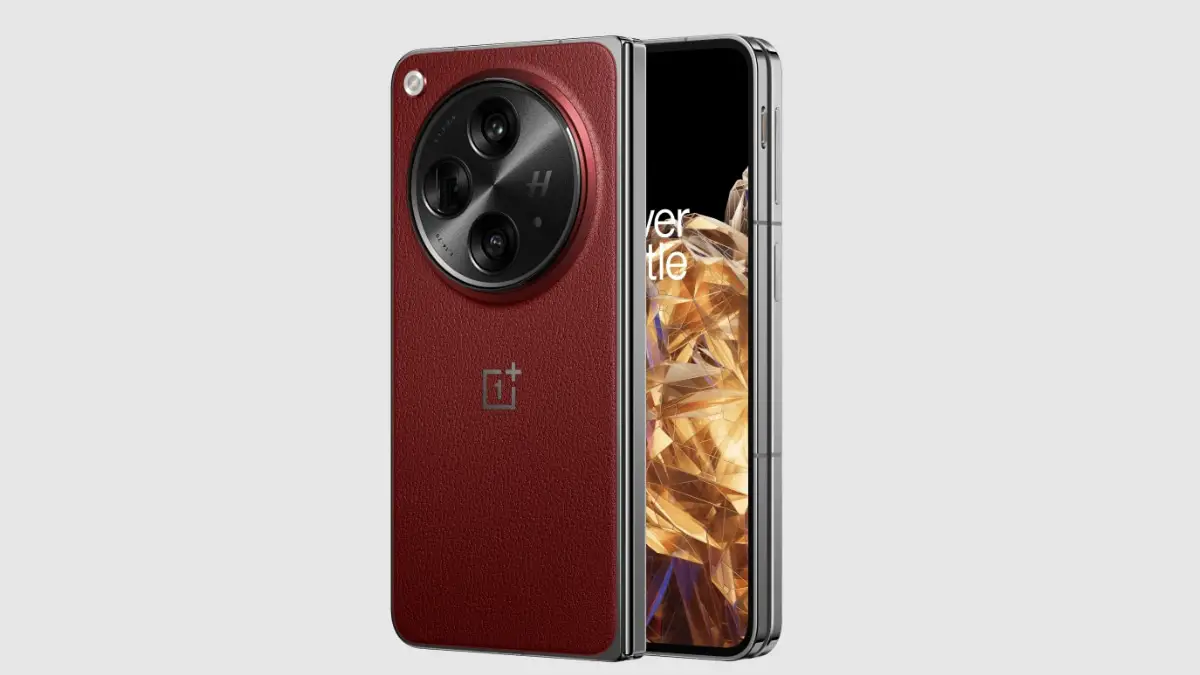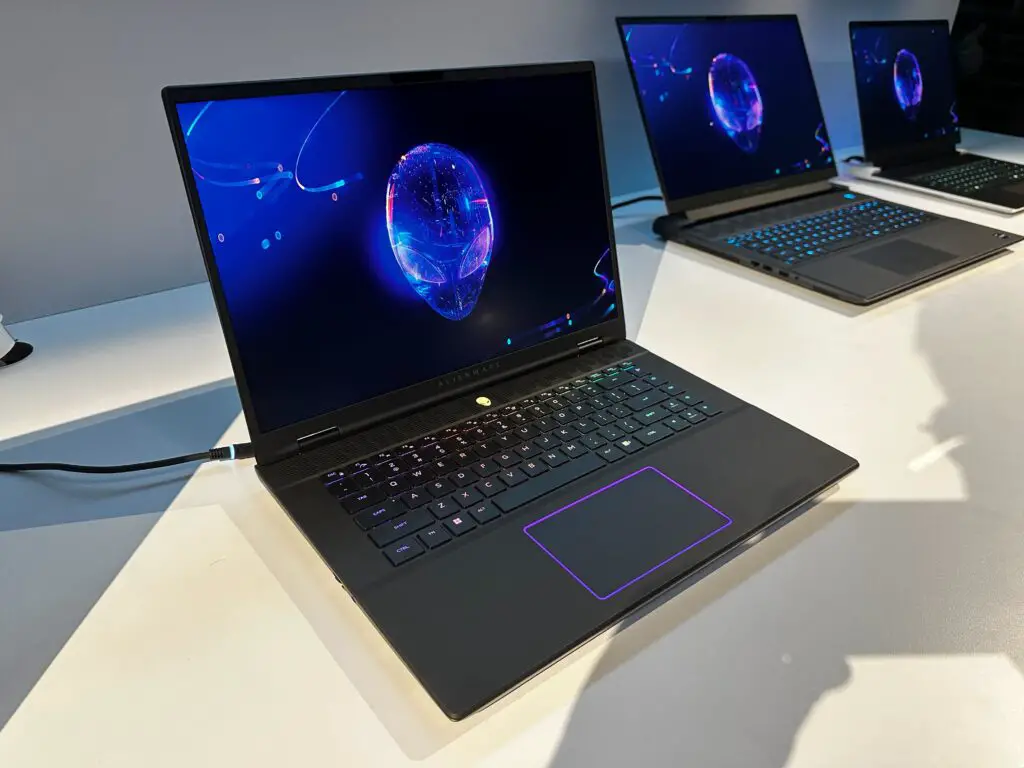Verdict
It might feel like a GH6 II rather than an entirely new camera, but the Panasonic GH7 builds on the GH6’s strong foundations with meaningful improvements to autofocus and image quality and support for 32-bit audio. A superb all-rounder that’s perfectly suited to today’s do-it-all creator.
Pros
- Huge range of pro-friendly video modes
- Impressive all-round image quality
- Superb image stabilisation
- Much-improved autofocus over GH6
Cons
- Bulkier than most MFT cameras
- Battery life is fairly limited
Key Features
- 25.2-megapixel BSI CMOS SensorNew image sensor, shared with Panasonic G9 II
- Apple ProRes RAW internal recordingAnd huge range of video modes including 4K/120fps
- Phase Hybrid AFNew and improved phase-detection autofocus system
- 32-bit float audio recordingWith £499 XLR2 adapter
Introduction
This camera might look familiar but trust us, it’s brand new – and very much improved.
The Panasonic Lumix GH7 is the spitting image of its 2022-released predecessor, the GH6, and comes with an outwardly similar spec and feature list. Delve deeper and it becomes clear that the GH7, the new flagship for Panasonic’s Micro Four Thirds Lumix G range, offers several enhancements, most notably in its adoption of a phase-detection autofocus system and an improved image sensor. It’s also the first ever mirrorless camera to support 32-bit float audio recording – albeit via an optional accessory.
The GH6 was an impressive all-rounder with a dazzling array of video recording options, so do the GH7’s tweaks make it even more appealing? I spent a week shooting both video and photos with it to find out.
Design and handling
- Identical design and controls to GH6
- EVF and excellent articulated screen
- Built-in cooling system adds to size
As mentioned above, the GH7 is physically identical to the GH6, at least as far as I can tell. The only difference is the tag with the camera’s name. This similarity is no bad thing in my opinion: the control layout is excellent, with chunky mode and drive dials on top, buttons dedicated to almost every conceivable function and two stop/start recording buttons for video users (one on the front, one on the back).
There are also front and rear tally lamps, so you’ll know for sure when the camera is recording video, a small but crisp OLED viewfinder and the same double-hinged 3-inch touchscreen. The screen’s design means it can be pointed in almost any direction, while the extra tilt from the second hinge allows it to be moved away from any cables connected to the GH7’s side ports – handy if you still want to see the screen clearly from the front while using USB, mic or headphones.
There’s no getting around the fact that the GH7, like the GH6, is large and heavy – at least compared to most Micro Four Thirds cameras. In fact, at 721g and 138.4 x 100.3 x 99.6mm, the GH7’s body is bigger and heftier than the Panasonic S5II, which has a much bigger full-frame sensor. Still, the fact that MFT lenses are smaller and lighter in weight than L-mount lenses means portability still tips slightly in favour of the GH7. Slightly.
The main reason for the GH7’s increased bulk is its built-in cooling system, which uses a fan and two vents to draw cool air into the camera and then expel hot air. It’s one of the camera’s key features, though, as it allows for unlimited recording times for hi-res video – something many similar cameras can’t offer due to overheating issues. In my opinion, it’s well worth that bit of extra luggage.
The GH7 is well put together too, with a magnesium alloy frame and an all-round solid build. It doesn’t have an official IP rating and Panasonic won’t describe it as weatherproof, but do claim it to be “dust and splash resistant”. You can use it in light rain, I’d say, but don’t take it out in a storm.
Features and performance
- Phase-detect autofocus
- Effective in-body image stabilisation
- Good connectivity including full-size HDMI
Arguably the GH7’s biggest improvement over the GH6 is its autofocus system. With its contrast-detection setup, the GH6 struggled to lock on to a subject as quickly as rival cameras. That’s now been supplemented with a phase-detection setup that Panasonic calls Phase Hybrid AF, and the result is much quicker and more accurate autofocus performance, with none of the “hunting” I experienced with the GH6. When a recognisable subject moves into the frame (these include humans, animals, cars, motorcycles, trains and aeroplanes – you can pick your chosen subject in the menu), the GH7 finds and focuses on it extremely quickly, stays focussed as it moves around the frame and reacquires it if it moves out of the frame and back in again. It’s a vast improvement on possibly the GH6’s weakest area.
The GH6’s built-in image stabilisation, on the other hand, was excellent – and that continues here. The GH7 can stabilise any lens through a user-adjustable combination of sensor-shift and electronic stabilisation, and using lenses with optical stabilisation will improve things further still. Panasonic says the system offers up to 7.5 stops of correction, and I don’t doubt it: even without particularly careful handling I was able to achieve an almost gimbal-like level of performance while walking. If you’re a vlogger who wants to record to-camera pieces while walking around, the GH7’s autofocus and stabilisation make it the ideal camera to use.
Connectivity is very solid. The full-size HDMI output can feed 5.8K RAW data to an external recorder, while the USB-C port (which handles charging, power supply and data transfer) allows an SSD to be used for direct recording. There’s dual-band Wi-Fi and Bluetooth on the wireless front too, and like the GH6, the camera supports live streaming either via Wi-Fi or USB. It cannot be used as a USB webcam, however.
There are also 3.5mm headphone and mic sockets, and for more demanding users, mounting the new XLR2 adapter (£499) on the hot shoe allows up to two XLR microphones to be connected – and for 32-bit float audio to be recorded on the camera. Panasonic sent me the adapter with my GH7 review sample, and the 32-bit float option is something people recording in difficult conditions (where setting gain accurately is tricky) will appreciate fully; with its huge dynamic range, it allows much more scope for adjusting audio levels in post-production. For most people, the 3.5mm input and a shotgun or lavalier mic will likely be sufficient.
Internal storage is handled by two card slots: one for SD and one for ultra-fast CFexpress Type B cards. The latter slot is required if you want to access some of the higher bitrate recording modes.
Finally, a word on the battery life. It’s not outstanding – I was only able to get about an hour of video recording out of a full charge. On the plus side, the USB-C port supports constant power supply as well as recharging, so keeping the GH7 powered when you’re out and about isn’t as difficult as it could be.
Image quality
- New 25.2MP sensor with Dynamic Range Boost
- Video resolution up to 5.8K
- 14fps/60fps continuous burst mode
Micro Four Thirds sensors are small with small pixels, and that’s led to a reputation that they come up rather short when it comes to dynamic range and low-light performance – at least compared to larger full-frame and APS-C sensors. The GH6 attempted to bring things in line with its larger-sensor rivals with Dynamic Range Boost, a feature that Panasonic kept fairly quiet but worked by capturing and then merging two separate outputs from the sensor for each photograph or frame of video. It worked well in most situations but not in all, and in high-contrast situations it could also cause unsightly visual artefacts in the form of horizontal streaks.
I didn’t encounter these streaks personally but have seen plenty of evidence that many people did. Thankfully the GH7, which uses a new 25.2MP sensor (previously seen in the Panasonic G9 II) has addressed the Dynamic Range Boost issue, not only fixing the streaking but improving overall dynamic range. In fact, photos and videos look absolutely fantastic by the standards of MFT cameras, and while I’d still pick a full-frame camera over this if I was primarily shooting in darker conditions, the GH7 can go toe-to-toe with the best APS-C cameras in pretty much any situation.
Panasonic’s colour science is impressive, with JPEGs looking great straight out of the camera and a wide range of preset photo and video styles to experiment with. You can also upload your own and other peoples’ LUTs into the camera, previewing their effects and baking them into any shots you capture. Panasonic Lumix Lab mobile app is a great way to do this. You can, of course, shoot in RAW, or using the flat V-log profile, then tweak your photos and videos in post-production. It’s the best method for drawing every bit of dynamic range out of the camera: in fact, you can get over 13 stops of dynamic range when shooting V-log.
The GH7 is a strong all-rounder but video users are particularly well-served thanks to the sheer range of recording modes, bitrates, frame rates and more on offer. It can even shoot Apple ProRes RAW HQ internally, as well as C4K at 120fps and Full HD at 240fps, giving it huge potential for creating everything from fun family videos to, well, films and other professional pieces. The GH6 was strong in this area, but the GH7 takes things even further.
For stills shooters, the rapid continuous shooting speeds (14fps with mechanical shutter and AF, 60fps with electronic shutter and AF, or 75fps with electronic shutter and manual focus) make it ideal for shooting wildlife and sport – both of which will get a boost from the aforementioned improved autofocus too.
Latest deals
Should you buy it?
You should buy if you want a high-end do-everything camera:
The GH7 is a stunning creative toolbox, particularly when it comes to video. If you’re a content creator with demanding standards, its wide range of capabilities and pro-level performance will be right up your street.
You should not buy if you’re looking for a pocket rocket:
The GH7’s size and weight are greater than that of some full-frame cameras, despite its small MFT sensor. Its battery life is also fairly stingy. So if portability and stamina are key to you, you should probably look elsewhere.
Final Thoughts
I was impressed by the GH6 for its sheer range of video modes, rock-steady image stabilisation and connectivity, but wasn’t sold on its contrast-detection autofocus or battery life.
The GH7 takes everything that was great about its predecessor and either keeps it intact or improves upon it, while also bringing the autofocus in line with its competitor’s cameras. It hasn’t improved the battery life, sadly, but given that this camera costs the same as the two-year-old GH6 did when it launched, I have no complaints about its value whatsoever. A fantastic all-rounder that proves Micro Four Thirds still has loads to offer. To see what else the GH7 is up against, check out our round-up for the best cameras overall.
How we test
We test every camera we review thoroughly. We use set tests to compare features properly and we use it as our main device over the review period. We’ll always tell you what we find and we never, ever, accept money to review a product.
Every camera we review is used for at least a week
All of the main features are tried and tested in real-world settings
You might like…
FAQs
What type of sensor does the Panasonic Lumix GH7 carry?
The Panasonic GH7 features a Micro Four Thirds sensor.
What video resolution does the Panasonic Lumix GH7 support?
The Panasonic GH7 supports video resolutions up to 5.8K.
Full specs
UK RRP
USA RRP
Manufacturer
Video Recording
IP rating
Size (Dimensions)
Weight
ASIN
Release Date
Sensor Type
Autofocus
Burst shooting (mechanical shutter)
Burst shooting (electronic shutter)
Viewfinder
Screen
Image stabilisation
Wi-Fi
Bluetooth
Number of Memory card slots
USB charging
Microphone port
Headphone port
Lens mount
Panasonic Lumix GH7
£1999
$2195
Panasonic
Yes
No
-1 x x INCHES
719 G
B0D6RTT1X1
2021
Micro Four Thirds
Yes
Yes
Yes
Yes
Yes
Yes
Yes
Yes
2
Yes
Yes
Yes
Yes
Jargon buster
Bluetooth
Bluetooth is a method of wireless transmission that allows for the exchange of data between devices over short distances.
USB-C
The modern USB connector you’ll find on most Android phones, new laptops, cameras and games consoles. It’s reversible and used for charging along with data-transfer.










